Science
Prime Minister Narendra Modi hugs ISRO Chairman Sivan after Chandrayaan 2 setback

ISRO’s ambitious and prestigious project Chandrayaan 2 faced a huge setback in the early hours of September 7, 2019. The Vikram Lander was supposed to make a soft land on the lunar surface. However, the ISRO mission center lost communication with the lander just 2km above the moon.
The Vikram Lander Trajectory showed deviation in the path after the lander reached 2km. However, upon careful inspection, we came to the conclusion that the lander had problems right when it reached the 5 Km trajectory since we could visualize the path deviation. The communication was snapped upon reaching the 2 km trajectory.
ISRO took to Twitter and released a statement regarding the Chandrayaan 2 mission.
#Chandrayaan2 mission was a highly complex mission, which represented a significant technological leap compared to the previous missions of #ISRO to explore the unexplored south pole of the Moon.
For more updates please visit https://t.co/4vIrztVnng
— ISRO (@isro) September 7, 2019
We assume that the Vikram Lander could have crash landed on the surface of the moon. There are reports that the lander could have actually touched the surface of the moon but it failed to give any signals. However, the chances are less because of the deviation in the path on the trajectory.
Prime Minister Narendra Modi was the key person to visit the ISRO mission control center to witness the Chandrayaan 2 spectacle. Modi was seen clapping hands after the completion of each operation. Moreover, over 70+ students were also invited to watch the prestigious event.
Modi addressed the gathering for a short while after ISRO chairman Sivan appraised him of the situation. Modi asked engineers not to panic and work hard. He also interacted with the students. The interesting thing is that one student asked him how to become President of India. However, Modi replied back and asked the student – Why, don’t you want to become Prime Minister?
Modi returned to the ISRO mission centre at 8 AM to address the nation. His speech mainly sounded motivational and also gave inspiration to talented scientists. Modi’s speech was accepted with claps, while few engineers were unable to control the cry.
Modi returned back but he turned back and shook hands with ISRO Chairman K. Sivan. Sivan seems to be crying and Modi hugged and consoled him. Modi reportedly asked him not to worry and concentrate on the next mission.
#WATCH PM Narendra Modi hugged and consoled ISRO Chief K Sivan after he(Sivan) broke down. #Chandrayaan2 pic.twitter.com/bytNChtqNK
— ANI (@ANI) September 7, 2019
We don’t have any confirmation as to whether the Vikram lander crashed on the moon. The trajectory has changed from the actual path and the data gathered by ISRO will help them to find out the exact location of the lander. The Orbiter revolving around the moon will also help ISRO to keep track of the lander. Moreover, former NASA astronauts have lauded the efforts of ISRO and termed the mission as 95 percent success.
I am taking my blog to the next level with blogchatter’s #MyFriendAlexa

Science
ISRO releases first illuminated image captured by Chandrayaan-2 Imaging Infrared Spectrometer
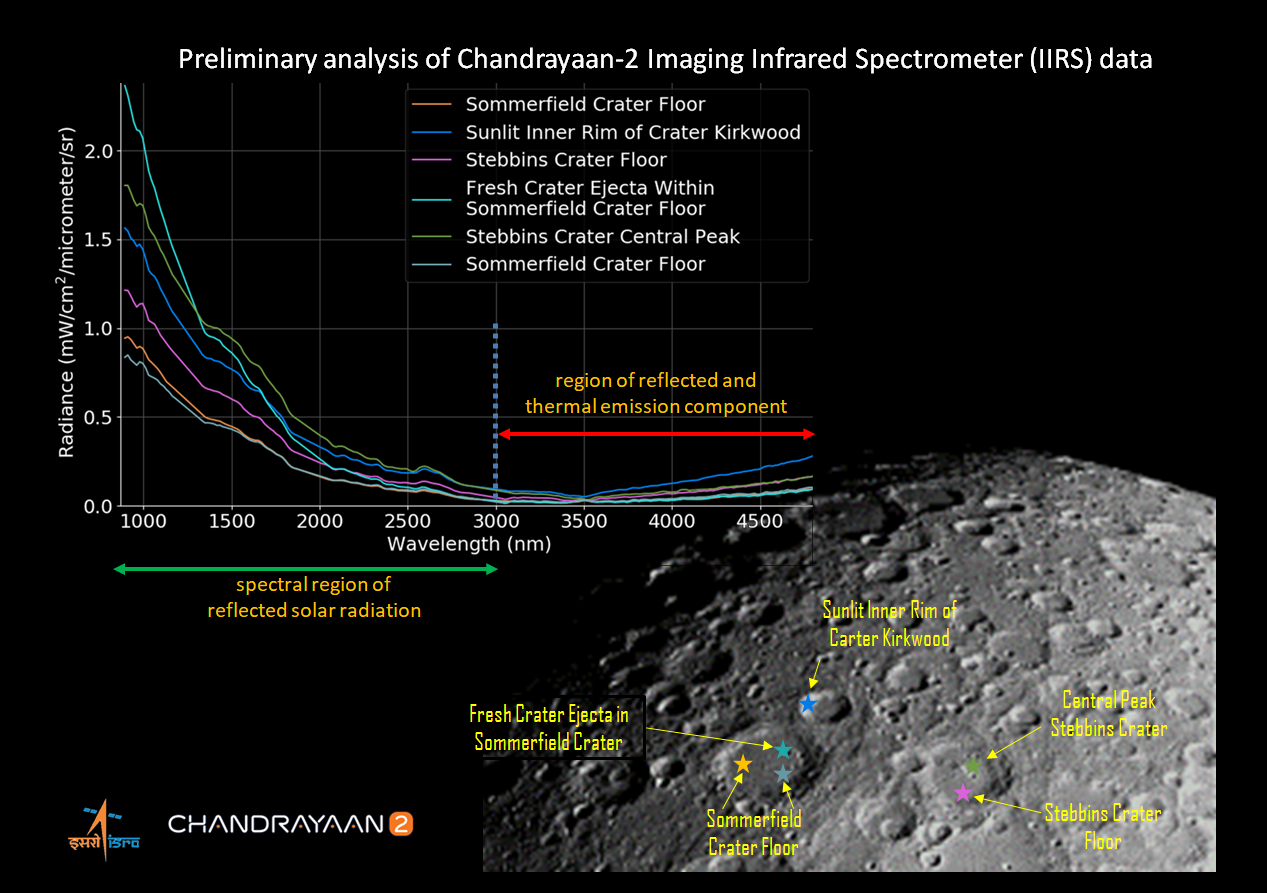
The Imaging Infrared Spectrometer (IIRS) integrated with the Chandrayaan-2 is designed to measure the reflected sunlight. The IIRS is designed to emit part of Moonlight from the lunar surface in narrow including contiguous spectral channels (bands) ranging from ~800 – 5000 nanometer (0.8-5.0 micrometer (µm)).
The Imaging Infrared Spectrometer makes use of grating to split and disperse the reflected sunlight (and emitted component) into different spectral bands. The main purpose of the IIRS is to understand the origin and evolution of the Moon in a geologic context by mapping the lunar surface mineral alongside volatile composition using signatures in the reflected solar spectrum.
ISRO has released the first illuminated image of the lunar surface as captured by the IIRS. The image shows part of the lunar farside in the northern hemisphere. You will be able to view few prominent craters such as (Sommerfield, Stebbins, and Kirkwood from the image released by the ISRO.
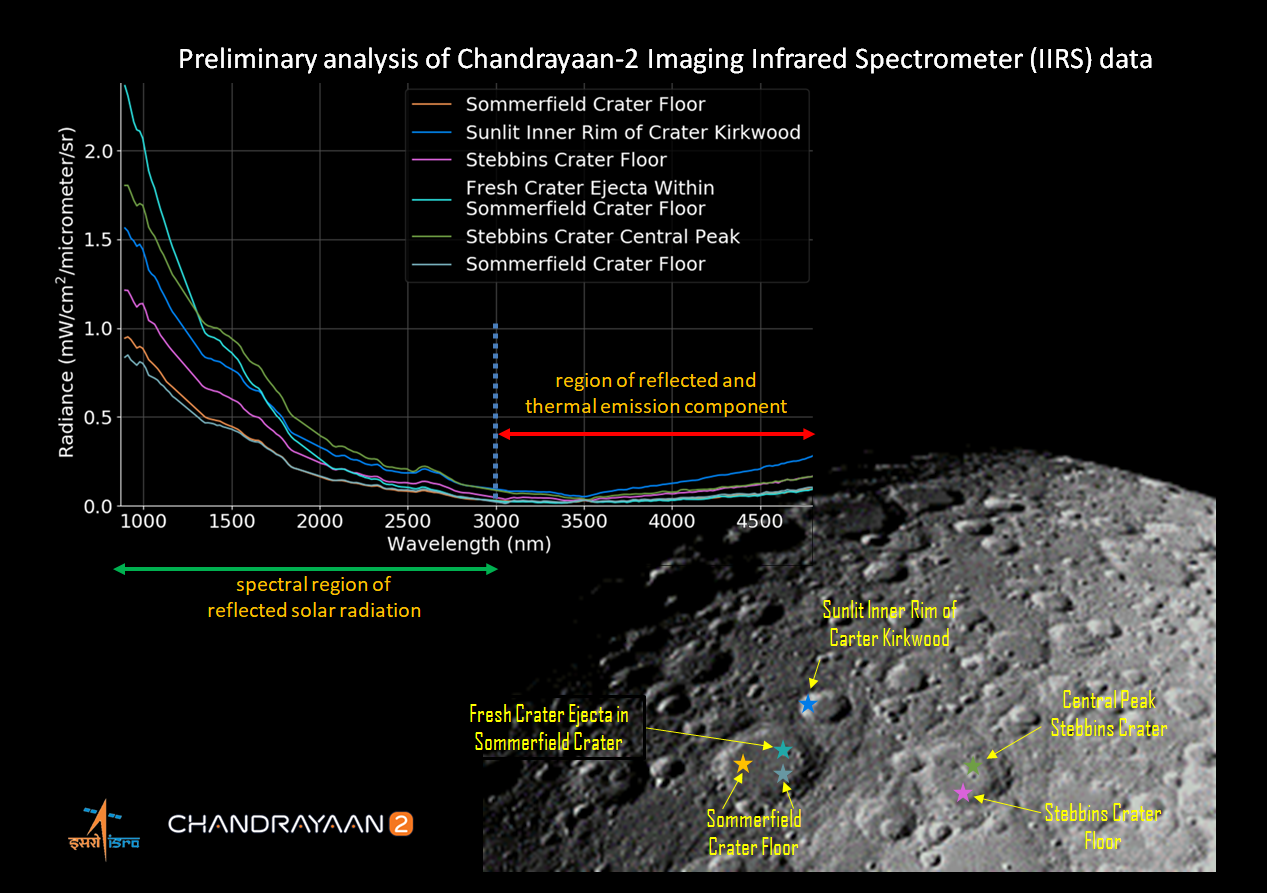
According to reports, the IIRS could successfully measure the variations in the reflected solar radiation that bounces off the lunar surface from different kinds of surface types such as crater central peaks, crater floors. The IIRS could also view fresh reworked ejecta associated with small craterlets within the crater floor of a large crater in addition to the sun-illuminated inner rims of craters.
The variations in the spectral radiance are primarily due to the mineralogical and compositional variations that exist in the lunar surface. It is also due to the effect of space weathering.
Science
ISRO Releases Chandrayaan 2 Orbiter High Resolution Camera Images

ISRO has released the images captured by the Orbiter High Resolution Camera (OHRC) included with the Chandrayaan2’s Orbiter. According to ISRO sources, the camera offers the highest megapixel ever launched any moon mission. The images expose the surface of the moon with craters.
#ISRO
Have a look at the images taken by #Chandrayaan2‘s Orbiter High Resolution Camera (OHRC).
For more images please visit https://t.co/YBjRO1kTcL pic.twitter.com/K4INnWKbaM— ISRO (@isro) October 4, 2019
The Orbiter High Resolution Camera (OHRC) bundled with Chandrayaan-2 provides very high spatial resolution images of the moon. The Orbiter operates in the visible Panchromatic band between 450nm to 800nm. The space agency will be able to capture the sharpest images with a spatial resolution of 25 cm from a 100 km orbit.

In a statement released to the press, the ISRo revealed that the OHRC images were acquired at 4.38 IST on September 5 from 100km altitude. The image covered a part of BOGUSLAWSKY E Crater and surroundings located in the southern polar area of the moon.
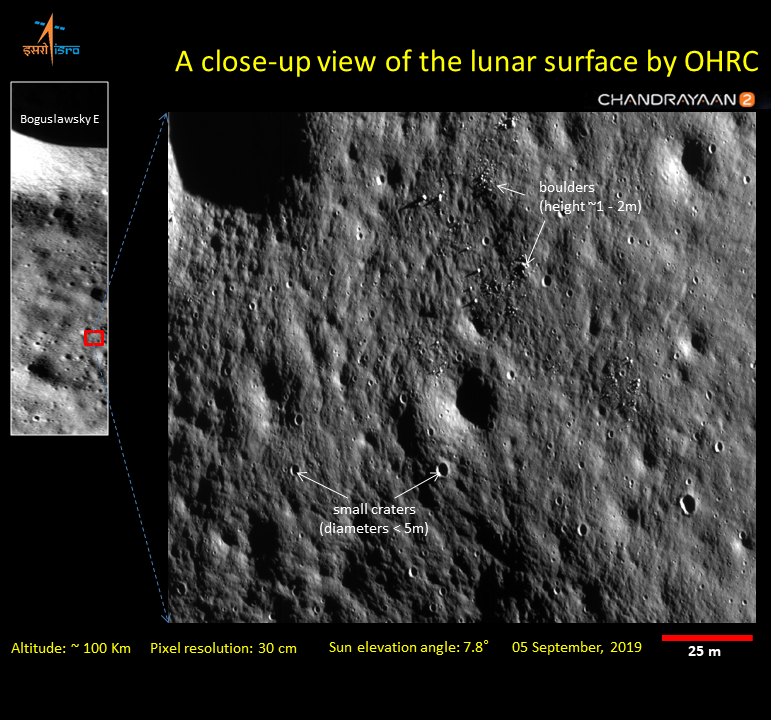
ISRO lifted off the prestigious Chandrayaan-2 moon mission with great expectations. The whole mission lasted over two months with several manovures. This includes separation of the orbiter with Vikram Lander. The Pragyan Rover was embedded inside the lander.
The whole Chandrayaan-2 mission was programmed in such a way that the rover enters the surface of the moon after the completion of the Vikram Lander touch down. If you follow ISRO launch missions, you will never forget September 7 because it is on this day that the lander was supposed to touch down on the moon.
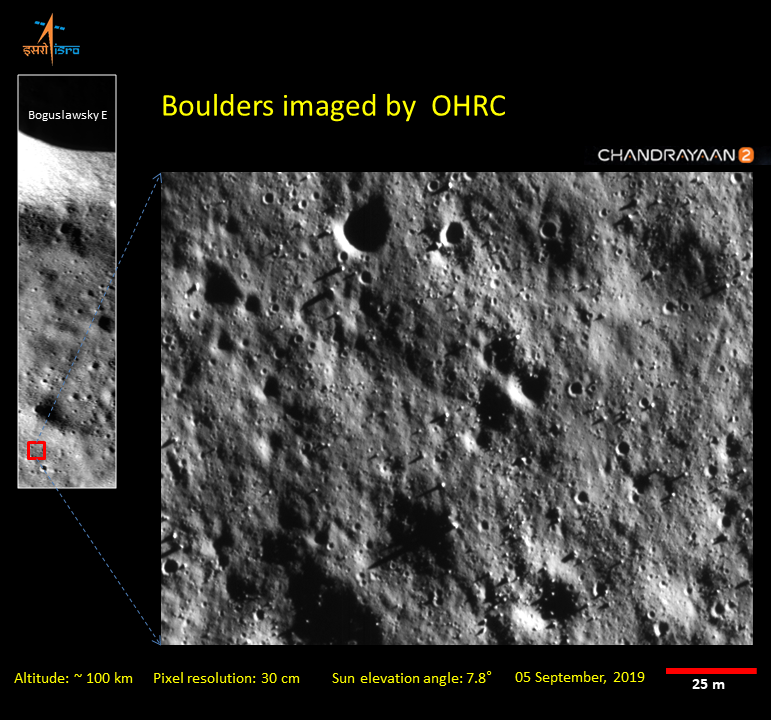
Prime Minister Narendra Modi was present at the mission control center to watch the golden moment. However, the expectations and happiness lasted only a few minutes because the lander disappeared just five minutes before the scheduled touchdown. Even though the whole mission was going as planned, the problem occurred during the descent stage when the lander reportedly lost control and fell on the surface of the moon.
ISRO had lost Vikram Lander and Paragtyan Rover embedded inside it. However, the orbiter bundled with the Chandrayaan-2 mission is still working perfectly. The interesting fact is that the Orbiter has got an overall lifespan of 7 years, which is sufficient to study the various factors on the moon.
Science
NASA confirms hard landing of Vikram Lander on the moon
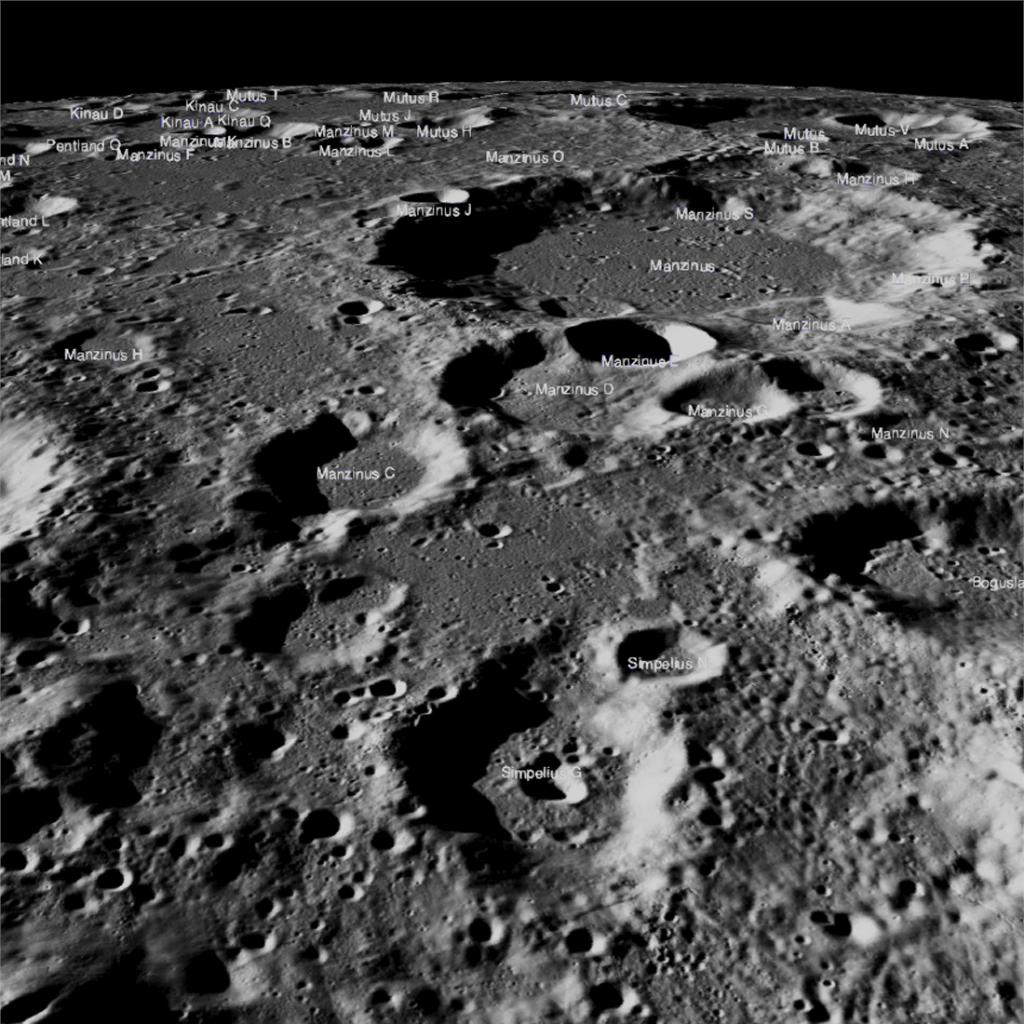
The fate of Vikram Lander, which was accompanied along with the ambitious Chandrayaan-2 is still in question. NASA took to Twitter and revealed that their orbiter failed to detect the lander on the surface of the moon. However, the US-based space agency managed to capture the site on the moon where the lander is supposed to soft land.
Our @LRO_NASA mission imaged the targeted landing site of India’s Chandrayaan-2 lander, Vikram. The images were taken at dusk, and the team was not able to locate the lander. More images will be taken in October during a flyby in favorable lighting. More: https://t.co/1bMVGRKslp pic.twitter.com/kqTp3GkwuM
— NASA (@NASA) September 26, 2019
The agency disclosed that the lander might be hidden deep inside the shadows since the images were captured at dusk. NASA also added that their Orbiter will capture more images during a flyby on the spot in favorable lighting.

The Orbiter is supposed to fly over the moon surface where the Vikram Lander was scheduled to soft land in good daylight. There are chances that the team could locate the lander next month.
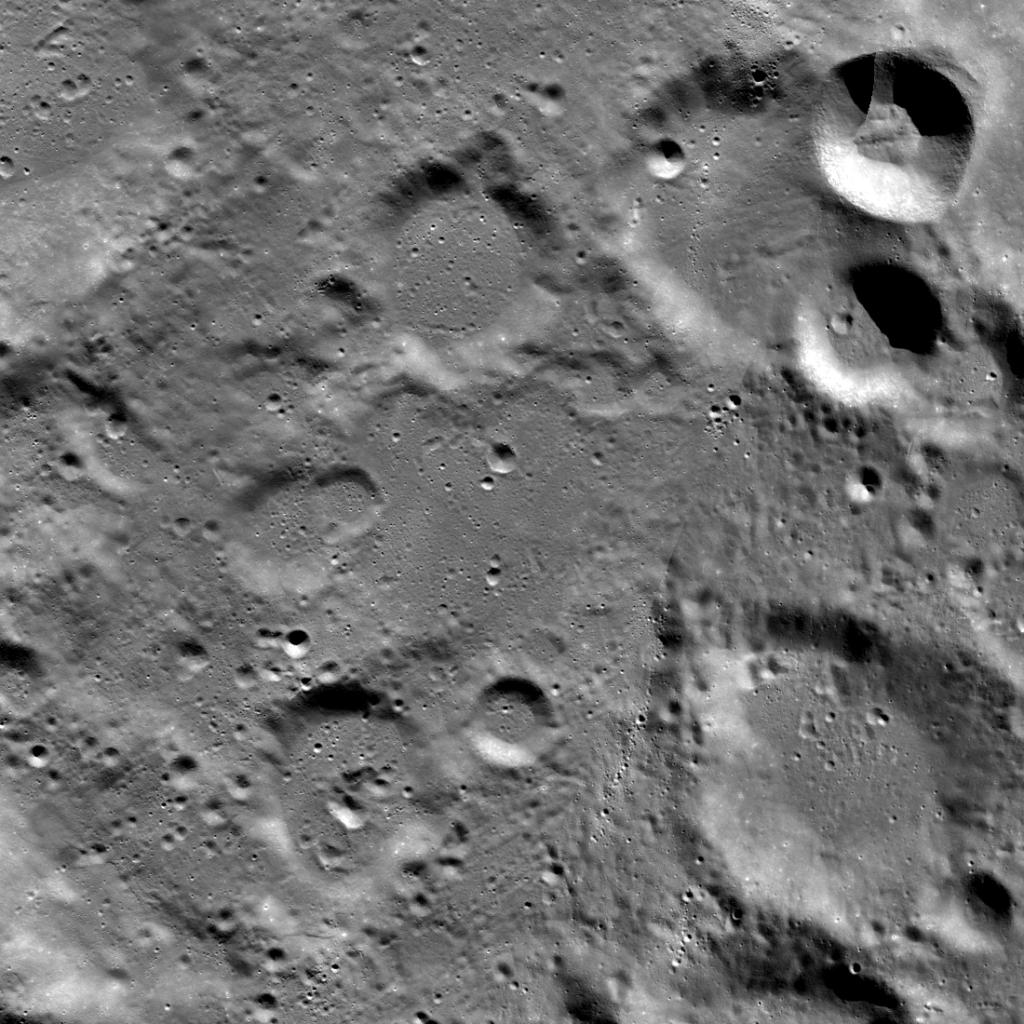
The images released by NASA show the surface of the moon in high resolution. If the Vikram Lander had landed as per the path and trajectory, we could be able to view the lander on the surface of the moon.
As you can observe from the above images, the lunar surface is full of rocks and craters. Hence, the lander could have faced extreme temperatures and crash landed somewhere away from the targeted location. ISRO has appointed a high-level committee consisting of senior officials and they will submit the report with the possible reason for the failure.
The Chandrayyan-2 mission went as planned without any problem. However, the mission control room lost connectivity with then lander when it was just 2 km above the lunar surface. The problem occurred around five minutes before the scheduled descent.
I am taking my blog to the next level with blogchatter’s #MyFriendAlexa
-

 Entertainment7 years ago
Entertainment7 years agoMalayam Actor Dileep Denied Bail In The Actress Assault Case
-

 Entertainment7 years ago
Entertainment7 years agoPuthiya Thalaimurai News Readers – Pictures
-

 Politics5 years ago
Politics5 years agoHowdyModi: Everything you want to know
-

 Entertainment7 years ago
Entertainment7 years agoAparna Balamurali Looks Beautiful In Sarvopari Palakkaran
-

 Entertainment8 years ago
Entertainment8 years agoVishu Celebrations – Suresh Gopi [Images]
-

 Entertainment8 years ago
Entertainment8 years agoHOT: Mollywood’s Most Romantic and Sensuous Lip-Lock Scenes
-

 Entertainment5 years ago
Entertainment5 years agoKaappaan Movie Reviews: Blockbluster or Flop
-

 Entertainment8 years ago
Entertainment8 years agoSaghavu – Madhumathiye Official Video Song – Nivin Pauly and Aishwarya Rajesh
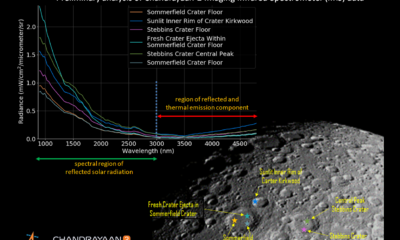

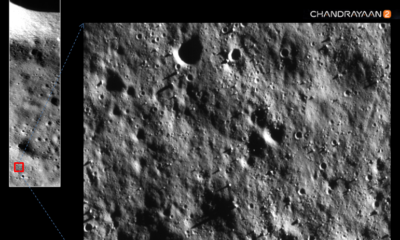

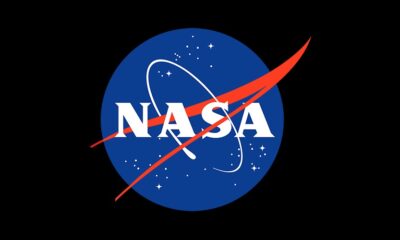

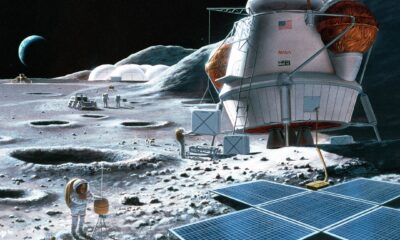












Janaki Srinivasan
September 7, 2019 at 8:00 pm
Yes…we must accept that ISRO has done a commendable job and made us proud. The speech given by our PM early in the morning was indeed inspirational, full of praise for our scientists. He is indeed a true leader.
Geethica Mehra
September 7, 2019 at 8:38 pm
95% success rate is very good and would be a full success next time. This is for sure.
Priyanka Chhabria
September 7, 2019 at 11:27 pm
It’s great when a leader like Modi sir is always there to support and motivate. Every Indian is so proud of each effort by ISRO.